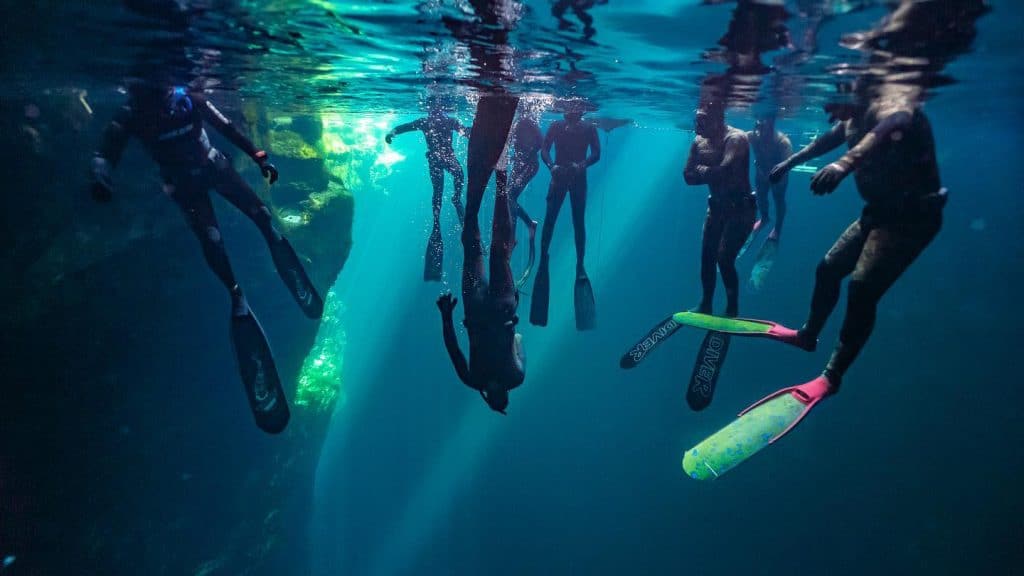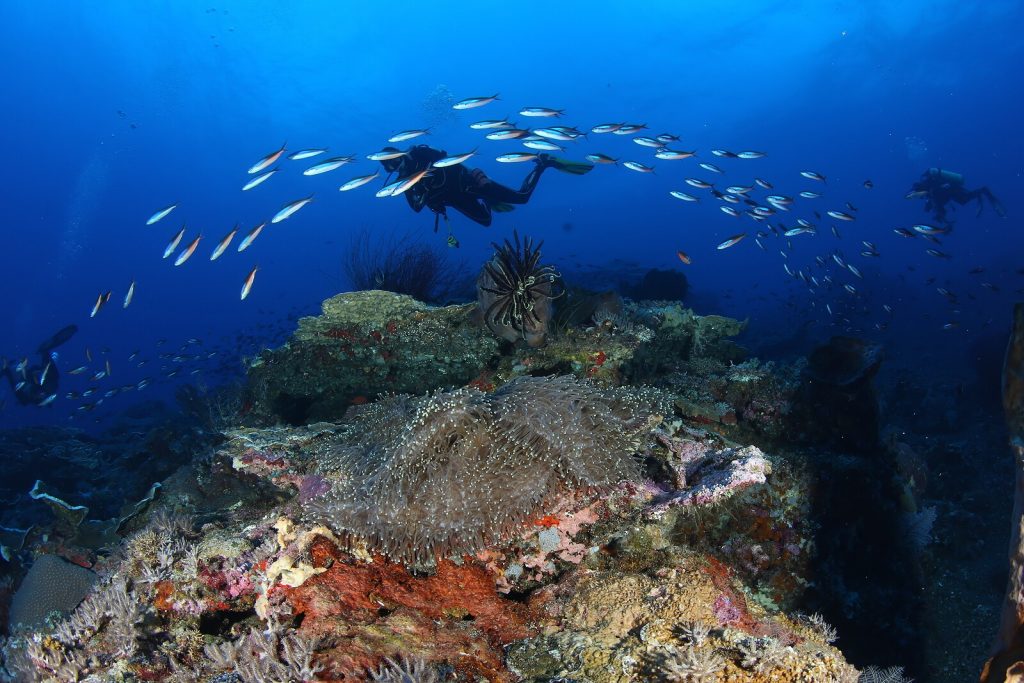
The Great Barrier Reef Snorkelling: A Bucket List Adventure for Thrill-Seekers
Australia’s Great Barrier Reef is one of the most iconic natural wonders of the world, drawing adventurers and nature enthusiasts from across the globe. Spanning over 2,300 kilometres along the Queensland coastline, this sprawling coral paradise is not only a UNESCO World Heritage site but also the largest coral reef system on the planet. Snorkelling in the Great Barrier Reef is a quintessential bucket list experience that offers thrill-seekers a chance to immerse themselves in a vibrant underwater world teeming with marine life and stunning coral formations.
“I love anything that involves the ocean. Swimming, snorkelling or surfing are all fun, which distracts from your mind that you are actually doing a workout. Being outdoors in the sun and the salt water is great for freeing your mind and feeling alive.” — Samantha Stosur, an Australian Former Professional Tennis Player
The Unmatched Beauty of the Great Barrier Reef
The Great Barrier Reef is home to an astonishing diversity of marine species, with over 1,500 types of fish, 411 types of hard coral, and numerous species of sharks, rays, and marine turtles. It is in fact the largest coral reef on earth, as described by a blog by the Thrifty Nomads. Snorkelers are treated to a kaleidoscope of colours and movements as they explore the reef’s shallow lagoons, coral gardens, and drop-offs. The sheer variety of life and the breathtaking beauty of the coral structures make snorkelling here an unparalleled adventure.
Top Snorkelling Spots in the Great Barrier Reef
While the entire reef system is a snorkeler’s dream, there are several standout spots that offer exceptional experiences:
- Green Island: Located just 27 kilometres from Cairns, Green Island is a beautiful coral cay offering easy access to the reef. The island’s fringing reefs are perfect for beginners, with calm, shallow waters and an abundance of marine life.
- Agincourt Reef: Situated on the outer edge of the Great Barrier Reef, Agincourt Reef is renowned for its crystal-clear waters and vibrant coral formations. Snorkelers can encounter a variety of fish species and may even spot larger marine animals like reef sharks and rays.
- Fitzroy Island: A blog by the Barrier Reef Australia mentioned it to be well-known for its beauty and timeworn boulder strewn beaches. Just a short ferry ride from Cairns, Fitzroy Island boasts excellent snorkelling conditions right off its beaches. The island’s protected waters and diverse coral gardens make it a fantastic spot for both novice and experienced snorkelers.
- Lady Elliot Island: Located at the southern end of the reef, Lady Elliot Island is known for its incredible clarity and pristine coral ecosystems. The island is a sanctuary for manta rays, turtles, and a myriad of colourful fish.
- Low Isles: This group of two small coral islands is a fantastic snorkelling destination for those staying in Port Douglas. The surrounding waters are shallow and calm, offering a safe and enjoyable snorkelling experience for all ages.
Preparing for Your Snorkelling Adventure
Embarking on a snorkelling adventure in the Great Barrier Reef requires some preparation to ensure you have a safe and enjoyable experience:
- Choose the Right Gear
Investing in quality snorkelling gear is essential. A well-fitting mask, snorkel, and fins will make your experience more comfortable and enjoyable. Consider a wetsuit or rash guard for added protection from the sun and potential stings from marine life. - Learn Basic Snorkelling Techniques
If you’re new to snorkelling, take some time to practise basic techniques such as clearing your mask, using your snorkel, and swimming with fins. Many tour operators offer introductory lessons to help you get comfortable in the water. - Stay Safe in the Water
Always snorkel with a buddy and stay within the designated snorkelling areas. Be mindful of the currents and follow the instructions of your guide. Avoid touching or standing on the coral, as this can cause damage to the fragile ecosystem. - Respect Marine Life
The Great Barrier Reef is a protected marine park, and it’s important to respect the wildlife and their habitats. Maintain a safe distance from marine animals, and never attempt to feed or harass them.
“Conservation is the preservation of life on earth, and that, above all else, is worth fighting for.” – Rob Stewart, was a Canadian Photographer, Filmmaker and Conservationist
The Thrill of Snorkeling with Marine Giants
One of the most exhilarating aspects of snorkelling in the Great Barrier Reef is the opportunity to encounter some of the ocean’s most magnificent creatures. From graceful manta rays to the gentle giants of the sea, these encounters create unforgettable memories:
- Swimming with Manta Rays: Lady Elliot Island and other parts of the southern reef are renowned for their manta ray populations. Watching these graceful creatures glide through the water is a mesmerising experience that captivates snorkelers of all ages.
- Turtle Encounters: The Great Barrier Reef is a critical habitat for six of the world’s seven species of marine turtles. Snorkelers frequently encounter green turtles, loggerheads, and hawksbill turtles, especially around nesting sites and feeding grounds.
- Reef Sharks: While the idea of swimming with sharks may seem daunting, the reef sharks found in the Great Barrier Reef are generally harmless to humans. Snorkelers often spot blacktip and whitetip reef sharks cruising the coral gardens and sandy bottoms.
- Whale Watching: Between June and November, the Great Barrier Reef becomes a playground for migrating humpback whales. While snorkelling, you may be lucky enough to hear the haunting songs of these majestic creatures or even spot them breaching in the distance.
The Environmental Impact and Conservation Efforts
The Great Barrier Reef faces numerous threats, including climate change, coral bleaching, and pollution. It’s crucial for snorkelers and all visitors to be aware of their environmental impact and take steps to minimise it:
- Choose Eco-Friendly Operators: Opt for tour operators and snorkelling guides who prioritise sustainable practices and adhere to environmental regulations. Many operators are actively involved in reef conservation efforts and contribute to scientific research.
- Reduce Your Carbon Footprint: Travel responsibly by minimising your carbon footprint. Consider offsetting your travel emissions and supporting renewable energy projects.
- Support Reef Conservation: Contribute to organisations dedicated to preserving the Great Barrier Reef. Donations and volunteer efforts can help fund vital research and conservation initiatives aimed at protecting this natural wonder for future generations.
Snorkelling the Great Barrier Reef is more than just an adventure; it’s an opportunity to connect with one of the most vibrant and diverse ecosystems on the planet. Whether you’re a seasoned snorkeler or a first-time explorer, the reef offers a wealth of experiences that will leave you in awe of the underwater world. By preparing adequately, respecting the marine environment, and choosing sustainable practices, you can ensure that this bucket list adventure remains a cherished memory while contributing to the ongoing preservation of the Great Barrier Reef.
Dive in and discover the magic that awaits beneath the waves – it’s an experience that will stay with you for a lifetime. Excited to start your new snorkelling adventure? Visit The Pressure Project and check out the snorkelling tours we offer.
FAQs
The best time for snorkelling in the Great Barrier Reef is from June to October. During this period, the water is clear, visibility is high, and temperatures are mild, making it ideal for underwater exploration.
No prior experience is required to snorkel the Great Barrier Reef. Many spots offer calm, shallow waters perfect for beginners. Tour operators often provide introductory lessons to help you get started safely
Snorkelers can expect to see a diverse range of marine life, including over 1,500 species of fish, colourful coral formations, sea turtles, manta rays, and reef sharks. Each snorkelling spot offers unique encounters.
Essential snorkelling equipment includes a well-fitting mask, snorkel, and fins. It’s also advisable to wear a wetsuit or rash guard for sun protection and to prevent stings from marine life.
Yes, there are numerous guided snorkelling tours available, ranging from half-day trips to multi-day excursions. Guided tours provide safety, local expertise, and access to prime snorkelling spots.
To minimise your environmental impact, choose eco-friendly tour operators, avoid touching or standing on coral, use reef-safe sunscreen, and dispose of waste properly. Supporting reef conservation efforts is also beneficial.
Yes, you can snorkel the Great Barrier Reef year-round. However, conditions vary with the seasons. The dry season (June to October) offers the best visibility and weather, while the wet season (November to May) can bring rain and reduced visibility.
For a safe snorkelling experience, always snorkel with a buddy, stay within designated areas, be aware of currents, and follow your guide’s instructions. Stay hydrated, wear sun protection, and avoid disturbing marine life.
Plan your Great Barrier Reef adventure today! Book a snorkelling tour with our expert guides at The Pressure Project and discover the vibrant marine life up close.




